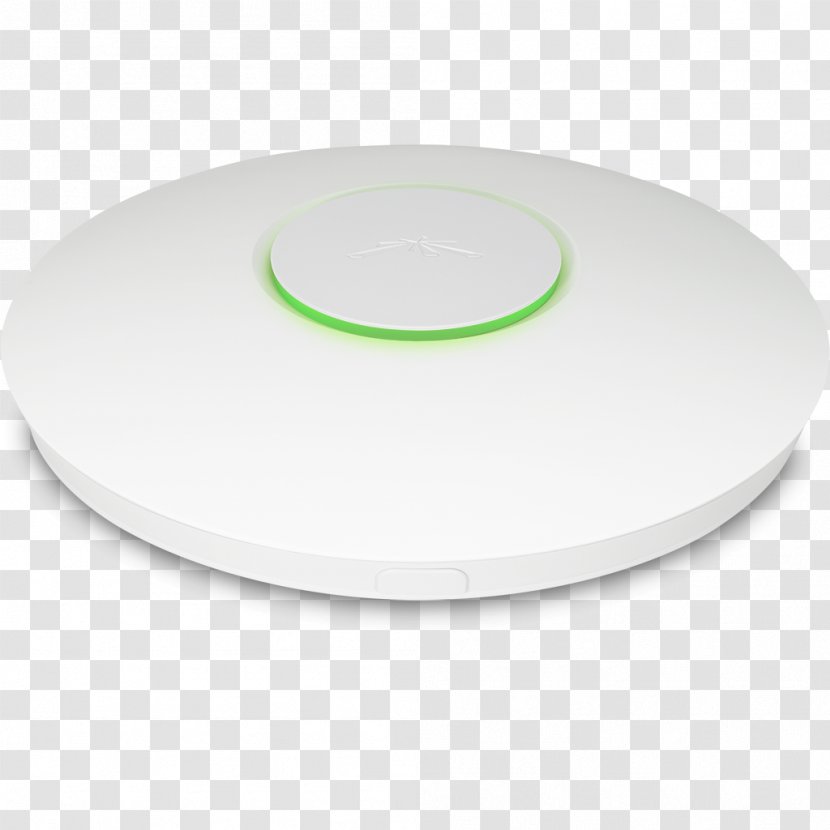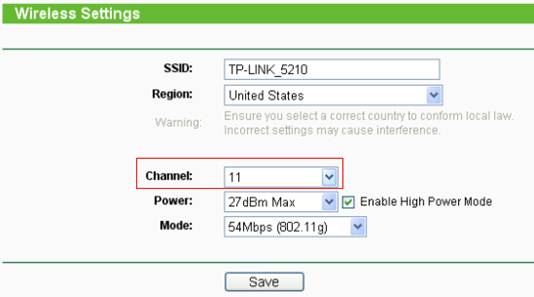Connect To Wireless Access Points
This tutorial explains the functionalities of the Access points and the Wireless LAN controllers in detail. Learn what the Access points and the Wireless LAN controllers are and how they work in the wireless network.
- What Do Wireless Access Points Connect To
- Install Wireless Access Points
- Connect Two Wireless Access Points Together
This tutorial is the part of the CCNA Study Guide. It explains the following CCNA topic.
Describe the impact of infrastructure components in an enterprise network.
- 1.3.b Access points
- 1.3.c Wireless controllers
Access point
A wireless access point, which allows devices to connect using Wi-Fi. Two devices, one box, very convenient. We often refer to these two devices packaged together as a “wireless router”, or just “the router”, or even as “the access point”, which blurs the distinction between the two. The physical setup for a wireless access point is pretty simple: You take it out of the box, put it on a shelf or on top of a bookcase near a network jack and a power outlet, plug in the power cable, and plug in the network cable. The software configuration for an access point is a little more involved, but still not very complicated. The Wireless Access Point (WAP) is a networking devices that enables the capability for wireless-capable devices to connect to a wired network. Introducing a WAP to your existing wired network is instrumental to accommodating those devices only capable of wireless connection.
An access point is the device that allows multiple wireless devices to connect with each other. Just like a HUB or switch connects multiple devices together in a single or multiple wired LAN networks, an access point connects multiple wireless devices together in a single wireless or multiple wireless networks. An access point can also be used to extend the wired network to the wireless devices.
Based on the functionalities, we can categorize the access point in three types; standalone access point, multifunction access point and controlled access point. Let’s understand each type in detail.
Standalone access point
A standalone access point provides the same functionality in wireless network which a switch or hub provides in the wired network. It provides connectivity between the different wireless devices. It accepts frame from the connected device and, based on its physical address, forwards it to the destination device.
Both the wired network and the wireless network use the different networking standards. Wired network uses the Ethernet standards while the wireless network uses the IEEE802.11 or Wi-Fi standards.
A device which only understands and supports the one type of standards from the Ethernet standards and the Wi-Fi standards cannot process the frame that is formatted in the other type of standards. For example a regular Ethernet switch neither understands the frame formatted in Wi-Fi standards nor processes it.
Access point supports both standards. Based on the destination device, it converts the received frame before forwarding it. For example if it receives a frame that is formatted with the Wi-Fi standards and have a destination address that uses Ethernet standards, it formats that frame with Ethernet standards before forwarding it to the destination.
Access point uses radio signals for connectivity. Any device which falls in its signal range can connect with it. This feature makes it more flexible but less secure in comparison with the regular Ethernet switch.
To enhance the security and stop the unauthorized access, the Access point uses authorization feature. Based on the security and the flexibility requirements, it can be configured to allow all users or to the selected users.
Multifunction Access Point

A multifunction access point is the combination of two or more devices. In this combination an additional device or devices are merged with the access point to provide the additional functionalities along with existing functionality of the access point. A wireless router which ISP uses to provide to the Internet connection is the perfect example of the multifunction access point. It consist of three devices; an access point, a regular Ethernet switch and a router.
Controlled Access Point
A controlled access point works as the client of the Wireless LAN Controller (WLC). Technically a controlled access point is known as the Lightweight Access Point (LWAP). LWAP doesn’t take any forwarding decision. Upon receiving a frame from the connected device, instead of forwarding it to the destination device, it forwards that frame to the WLC. The WLC, based on the security configuration, makes decision whether the received frame should be forwarded or discarded. If the frame needs to be forwarded, then it sends that frame to that LWAP, to which the destination device is connected. Then that LWAP sends this frame to the destination device.
The WLC - LWAP setup is usually used in the company environment to span a single wireless network in large geographical area. This setup allows users to roam around the office premise, campus or building and stay connected to the network.
In this setup, it doesn’t make any difference which LWAP a user uses to send and receive the frames as long as that LWAP is controlled by the same WLC. Since all forwarding decisions are taken by the WLC, an LWAP does not allow direct communication between the two devices, even if they both are connected with it.
Key points
- Access point connects multiple wireless devices together in a single wireless network.
- Access point supports both type of standards; Ethernet and Wi-Fi.
- Access point uses radio signals to provide the connectivity.
- Based on functionality an access point can be categorized in three types; standalone, multifunction and client.
- A standalone access point works in the wireless network exactly as the switch works in the wired network.
- To control the unauthorized access, Access point uses authorization.
- To extend the coverage area, multiple access points are used together under a Wireless LAN Controller.
- An access point which works under the WLC is known as the LWAP (Lightweight Access Point).
- In WLC-LWAPs setup, the WLC controls and manages all LWAPs.
- A LWAP works as the bridge between the WLC and the end device.
That’s all for this tutorial. If you like this tutorial, please don’t forget the share it friends through your favorite social network.
Objective
A Wireless Access Point (WAP) is a networking device that allows wireless-capable devices to connect to a wired network. Adding a WAP to your existing wired network is useful to accommodate those devices that are only capable of wireless connection. It is like creating another network only for wireless devices but still be a part of your existing wired network such as shown in the diagram below.

In the network diagram above, the left portion shows an existing wired network. It consists of four wired computers connected to a switch, which is connected to a router. In the right portion, a wireless network shows two wireless computers connected to a WAP.
The objective of this article is to show you how to add a wireless network to your existing wired network using a wireless access point.
Applicable Devices
- WAP100 Series
- WAP300 Series
- WAP500 Series
Software Version
- 1.0.6.5 — WAP121, WAP321
- 1.0.2.8 — WAP131, WAP351
- 1.0.1.7 — WAP150, WAP361
- 1.3.0.3 — WAP371
- 1.2.1.3 — WAP551, WAP561
- 1.0.0.17 — WAP571, WAP571E
Add a Wireless Network to an Existing Wired Network
Set up the Wireless Network
Note: Images may vary depending on the exact model of your WAP. The images used in this article are taken from the WAP361.
Step 1. Connect the WAP to your router or switch using the supplied Ethernet cable.
Note: If your WAP does not have Power over Ethernet (PoE) capability, connect the AC power adapter to the WAP and plug it to the power outlet.
Step 2. Connect your wireless computer to the wireless network that the WAP is broadcasting.
Note: The default Service Set Identifier (SSID) or wireless network name of the Cisco Access Point is ciscosb.
Step 3. On the wireless computer, access the web-based utility of the WAP by launching a web browser and entering the IP address of the WAP in the address bar.
What Do Wireless Access Points Connect To
Note: In the event that you do not know the IP address of your WAP, you can use the Cisco FindIT Discovery Tool or the Cisco FindIT Network Management tool if these applications are installed in your network. These applications will help you check the IP addresses and other information of the access point and other Cisco devices within your network. To learn more, click here.
Note: In the image above, 192.168.1.245 is used as an example of the IP address. This is the default IP address of Cisco Access Points.
Step 4. In the authentication window, enter the username and password of the WAP in the Username and Password fields, respectively.
Note: You can set up to five users to each access point that you are going to add to the network. These users are the ones authorized to access the web-based utility through their authentication keys but only one of these users can have the Read/Write privilege level. Also, you can create a different username and password to each user. To learn how, click here.
Note: The default username and password of the default user for Cisco Access Points is cisco/cisco.
Step 5. Click Log In.
Step 6. In the navigation area, choose LAN > IPv4 Setting.
Note: If you are using the WAP121, WAP321, WAP371, WAP551, or the WAP561, choose LAN > VLAN and IPv4 Address.
Note: If you want to use IPv6 Addressing instead, click here for instructions.
Step 7. Click a radio button to choose the Connection Type.
- DHCP — The access point acquires its IP address from a Dynamic Host Configuration Protocol (DHCP) server on the network.
- Static IP— You will be the one to manually assign the IPv4 address to the WAP.
Note: In this example, DHCP is chosen. This is the default setting. If you performed this step, skip to Step 12.
Step 8. (Optional) If you chose Static IP in the previous step, enter the static IP address you want to assign to the WAP in the Static IP Address field. Make sure that the IP address you assign is in the same range as your network.
Note: In this example, the IP address used is 192.168.1.112.

Step 9. (Optional) Enter the subnet mask in the Subnet Mask field.
Note: In this example, 255.255.255.0 is used.
Step 10. Enter the router IP address in the Default Gateway field.
Note: In this example, 192.168.1.1 is used as the default gateway.
Step 11. In the Domain Name Servers (DNS) area, the radio button for Manual will be automatically selected once the Connection Type is set to Static IP. You can enter up to two DNS addresses in the fields provided.

Note: In this example, 192.168.1.1 is used.
Step 12. Click Save.
Configure Wireless Settings
Step 1. Choose Wireless > Networks.
Step 2. (Optional) If you are using a dual-band access point, click a radio button to choose the Radio Interface that you want to configure.
- Radio 1 (2.4 GHz) — For wireless clients that operate in the 2.4 GHz frequency.
- Radio 2 (5 GHz) — For wireless clients that operate in the 5 GHz frequency.
Note: In this example, Radio 1 (2.4 GHz) is chosen.
Step 3. Under the Virtual Access Points (SSIDs) area, check the box beside the default Virtual Access Point (VAP) and click the Edit button below it.
Note: You can add or create multiple VAPs on your WAP depending on the exact model of your device by clicking on the Add button. For the WAP361, seven additional VAPs can be created.

Step 4. Under SSID Name, create a new name for your wireless network in the field provided.
Note: In this example, WireNet is used.
Step 5. (Optional) Under SSID Broadcast, check or uncheck the box depending on your preference. Checking the box would allow your wireless network to broadcast its SSID or to be visible to all wireless devices within its range. Unchecking the box would hide it from all wireless devices.
Note: In this example, SSID broadcast is checked.
Step 6. Under Security, click on the drop-down menu to choose the type of security you want to set up on the wireless network. The options are:
- None – This option would set the security to open and allow all wireless devices to connect to your wireless network without being asked for a password or authentication.
- WPA Personal — Wi-Fi Protected Access (WPA) is a security protocol designed to improve upon the security features of Wired Equivalent Privacy (WEP). WPA uses higher, 256-bit keys and improves data encryption and user authentication. This security mode allows you to use either the Temporal Key Integrity Protocol (TKIP) algorithm, or the latest, higher-level Advanced Encryption Security (AES) algorithm if the device is newer and supports it with WPA. Both options, however, implement stronger security standards.
- WPA Enterprise — In Enterprise mode, Wi-Fi Protected Access (WPA) is used with Remote Authentication Dial-In User Service (RADIUS) server authentication.
Note: In this example, WPA Personal is chosen. The Security details window would then be visible.
Step 7. Choose the types of client stations that you want to support by checking the check boxes in the WPA Versions area.
- WPA-TKIP — This option would allow wireless clients that only support the original WPA and TKIP security protocol to be able to connect to the network.
- WPA2-AES — This WPA version provides the best security per IEEE 802.11i standard. As per the latest Wi-Fi Alliance requirement, the WAP has to support this mode all the time.
Note: If the network has a mix of clients, check both of the check boxes. This setting lets both WPA and WPA2 client stations associate and authenticate, but it uses the more robust WPA2 for clients who support it. This WPA configuration allows more interoperability in place of some security.
Step 8. In the Key field, enter a password consisting of 8 to 63 characters. Each wireless device that would try to connect to this wireless network will be asked for this authentication key.
Step 9. (Optional) Check the Show Key as Clear Text box to show the password you created.
Note: The Key Strength Meter area shows colored bars based on the strength of the key that you have created. In this example, Str0ngPassw0rd! is used as the authentication key.
Step 10. In the Broadcast Key Refresh Rate field, enter a value from 0 to 86400 seconds. This is the interval at which the broadcast (group) key is refreshed for clients associated with this VAP.
Note: In this example, 300 seconds is used. This is the default value.
Step 11. (Optional) Under MAC Filter, click on the drop-down list either to disable MAC Filter or to specify whether the stations that can access this VAP are restricted to a configured global list of MAC addresses. The options are:
- Disabled — Does not use MAC filtering.
- Local — Uses the MAC authentication list that you configure on the MAC Filtering page.
- RADIUS — Uses the MAC authentication list on an external RADIUS server.
Note: To learn how to configure MAC Filtering, click here.
Note: In this example, Local is chosen.
Install Wireless Access Points
Step 12. (Optional) Check or uncheck the check box under Channel Isolation to enable or disable it depending on your preference. When enabled, the WAP blocks communication between the wireless clients on the same VAP. The WAP still allows data traffic between its wireless clients and the wired devices on the network, across a Wireless Distribution System (WDS) link, and with other wireless clients associated with a different VAP, but not among the wireless clients. When disabled, the wireless clients can communicate with one another normally by sending traffic through the WAP.
Note: In this example, Channel Isolation is disabled. This is the default setting.
Step 13. (Optional) Check or uncheck the check box under Band Steer to enable or disable it depending on your preference. This feature is for dual-band WAPs only. Enabling band steer effectively utilizes the 5 GHz band by steering dual-band supported clients from the 2.4 GHz band to the 5 GHz band when both radios are up. How to get more hairstyles on sims 4.
Note: In this example, Band Steer is enabled.
Step 14. Click Save.
Connect Two Wireless Access Points Together
You should now have successfully added a wireless network to your existing wired network using a wireless access point as shown in the diagram below.

